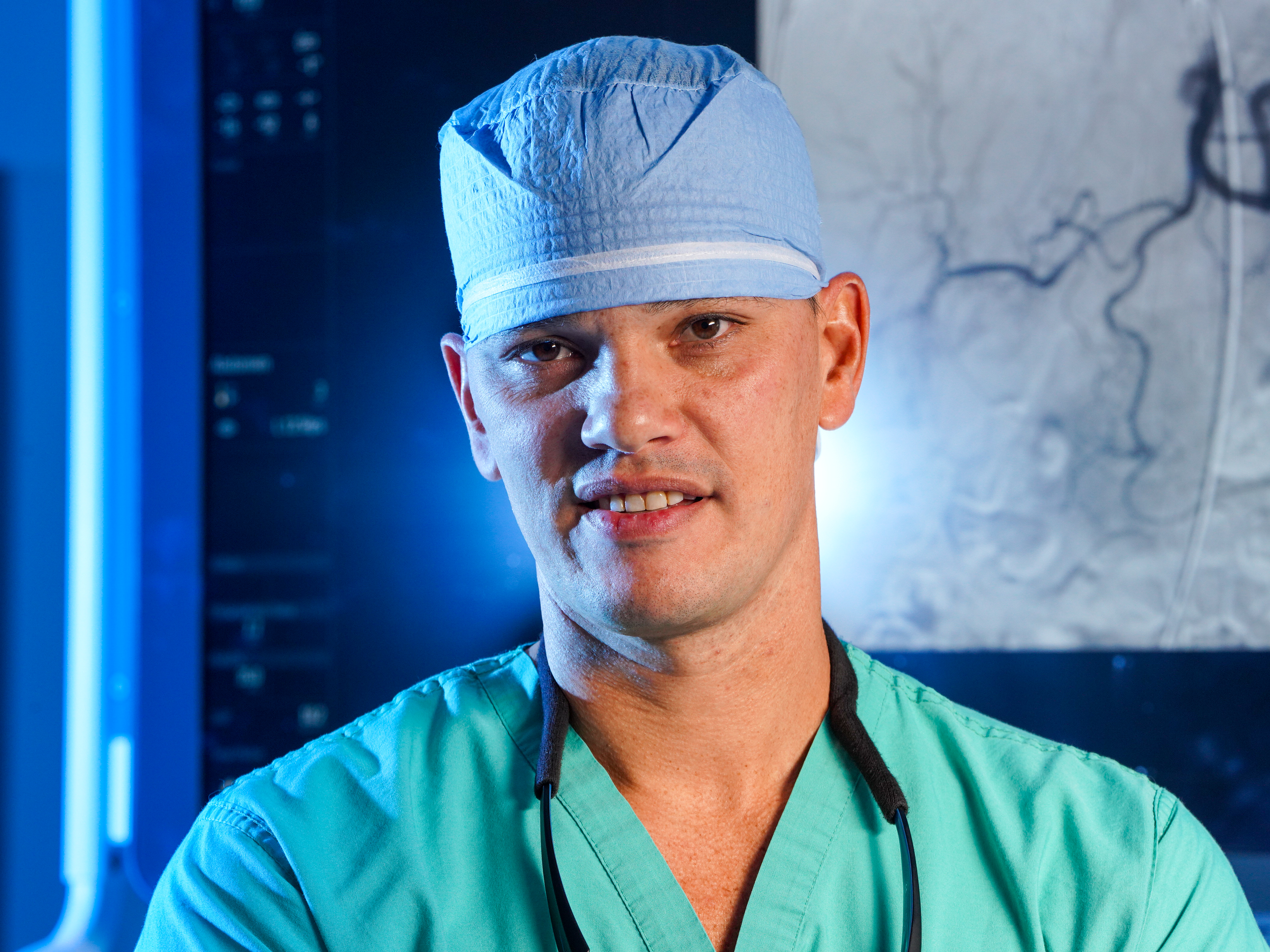From the Mummers Parade to her Inspira care team, Christina Camuccio found strength in every note of...
Read MoreEffective Monday, January 5th, Inspira Health is now at Yellow Alert Status: Masks for staff, patients and visitors in all high-risk areas across our facilities are strongly recommended.


Liver cancer accounts for about 700,000 deaths per year worldwide. Now, liver cancer patients at Inspira Medical Center Mullica Hill can access a highly effective treatment option: radioembolization. This therapy uses high doses of targeted radiation to kill cancer cells in the affected area of the liver.
Radioembolization, also referred to as selective internal radiation therapy, is used to treat hepatocellular carcinoma (HCC) and certain other cancers that have metastasized to the liver. This high dose of radiation is delivered transarterially during an outpatient procedure. “As part of a multidisciplinary treatment plan, radioembolization is both highly effective at killing cancer and very well tolerated by patients,” said David Hansberry, M.D., Ph.D., vascular and interventional radiologist at Inspira Medical Center Mullica Hill.
Treating liver cancer involves a multidisciplinary team of oncologists and can include systemic treatment, external radiation and surgical excision. If radioembolization is part of a patient’s treatment plan, they will first come in for an arteriogram to assess the blood supply to and around the tumor. A customized dose of yttrium-90 (Y90), the radioactive isotope used in this treatment method, is ordered for the patient, who can undergo radiation therapy one to two weeks later.
Y90 can only travel up to 1.2 centimeters within the body—ensuring that the radiation only targets the area affected by cancer cells. During the procedure, glass microspheres—about the size of four red blood cells—containing Y90 are delivered by a catheter that runs through the groin and into the liver artery that is supplying blood to the tumor. The microspheres then become lodged into the tumor blood vessels, delivering a precisely targeted high dose of radiation. There is no isolation requirement for the patient after treatment.
“The success rates of radioembolization are comparable to surgical resection with the added benefit of localization that allows us to keep the risks and side effects for patients relatively low,” said Dr. Hansberry.
Patients may experience fatigue after treatment, but are able to go home the day of the procedure. Risks of radioembolization include injury to the blood vessel, injury to the kidneys, and liver failure, although these are rare.
“I’ve performed radioembolization on many patients to great success, and I’m very excited to bring this advanced treatment method to Inspira,” said Dr. Hansberry. Radioembolization is currently available as a treatment option for patients at Inspira Medical Center Mullica Hill. Efforts are underway to bring this treatment to the Vineland campus as well.
Inspira Health is a high reliability organization (HRO), which means safety is the top priority for patients, providers and staff.

From the Mummers Parade to her Inspira care team, Christina Camuccio found strength in every note of...
Read More
Prostate cancer is the second most common cancer in men. While metastatic disease can feel daunting...
Read More
Explore the unique challenges and essential screening strategies for individuals with dense breast...
Read More